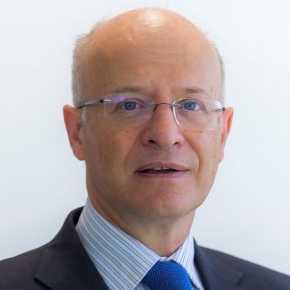Modeling, Analysis, Simulation, Control and Protection of Converter Dominated Power Systems
A special issue of Energies (ISSN 1996-1073). This special issue belongs to the section "F1: Electrical Power System".
Deadline for manuscript submissions: closed (20 May 2022) | Viewed by 3330
Special Issue Editor
Special Issue Information
Dear Colleagues,
Energy transition will lead to a power system dominated by generation (wind and solar photovoltaic) that is connected to the grid through power electronic converters. Moreover, HVDC transmission will be a relevant component in such power systems. A converter dominated power system raises many challenges in modeling, analysis, simulation, control and protection. What models can be used to characterize the relevant dynamics? What simulation and analysis techniques are appropriate for the proposed models? How should controllers of inner, outer and complementary loops be designed? How should the current protection system be operated and what modifications will be needed?
Potential topics include, but are not limited to:
- Models of power electronic converters;
- Models of wind and solar photovoltaic plants;
- Overall power system models;
- Time domain simulation of highly stiff systems;
- Eigenvalue analysis;
- Inner control, outer control loop and supplementary controller design;
- Controller interaction;
- Protection systems;
- Practical studies of power systems with mostly converter-based generation.
Prof. Dr. Luis Rouco Rodríguez
Guest Editor
Manuscript Submission Information
Manuscripts should be submitted online at www.mdpi.com by registering and logging in to this website. Once you are registered, click here to go to the submission form. Manuscripts can be submitted until the deadline. All submissions that pass pre-check are peer-reviewed. Accepted papers will be published continuously in the journal (as soon as accepted) and will be listed together on the special issue website. Research articles, review articles as well as short communications are invited. For planned papers, a title and short abstract (about 100 words) can be sent to the Editorial Office for announcement on this website.
Submitted manuscripts should not have been published previously, nor be under consideration for publication elsewhere (except conference proceedings papers). All manuscripts are thoroughly refereed through a single-blind peer-review process. A guide for authors and other relevant information for submission of manuscripts is available on the Instructions for Authors page. Energies is an international peer-reviewed open access semimonthly journal published by MDPI.
Please visit the Instructions for Authors page before submitting a manuscript. The Article Processing Charge (APC) for publication in this open access journal is 2600 CHF (Swiss Francs). Submitted papers should be well formatted and use good English. Authors may use MDPI's English editing service prior to publication or during author revisions.
Keywords
- Electromagnetic models
- Reduced models
- Large disturbance stability
- Small signal stability
- Voltage and frequency stability
- Subsynchronous oscillations
- Low frequency oscillations
- Controller design
- Protection systems





